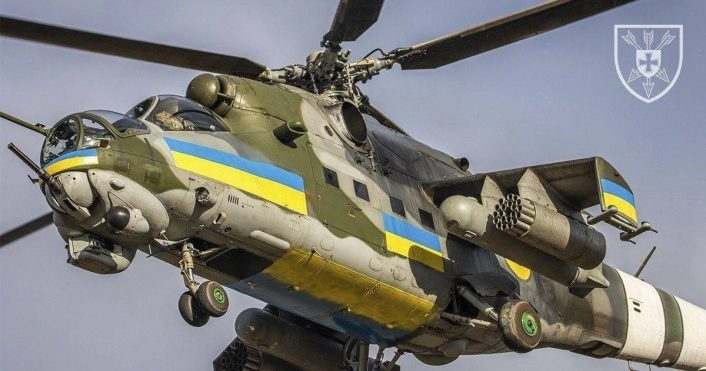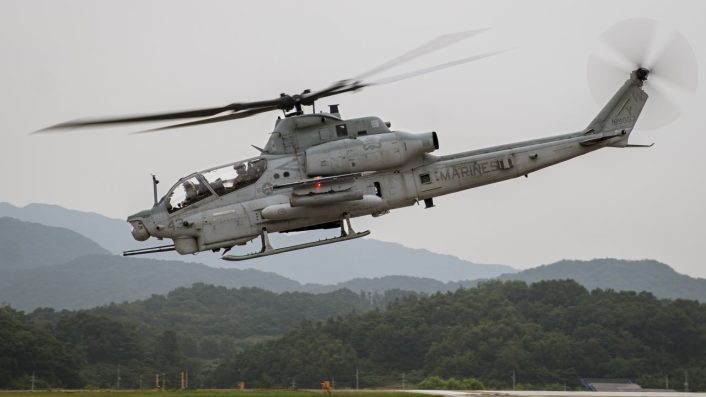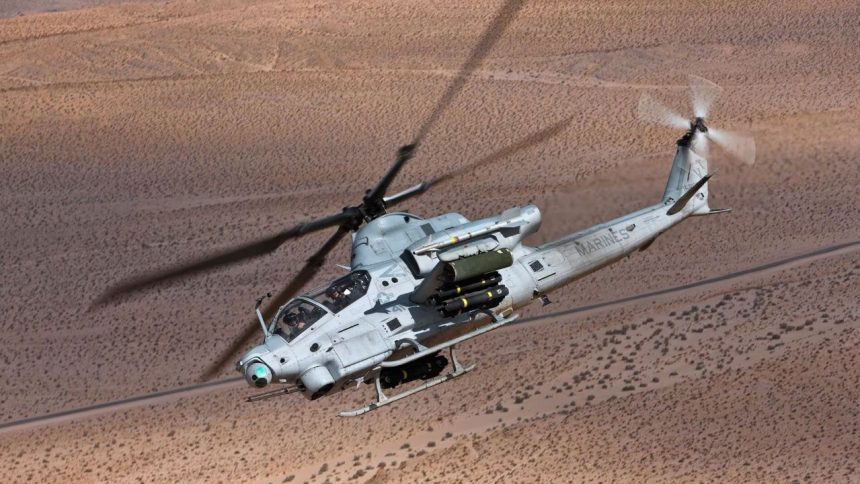Vadym Ivchenko, a member of Ukraine’s parliamentary Committee on National Security said Ukraine needs the AH-1Z helicopters in the provinces of Donetsk, Zaporizhzhia and for the operation in the Kursk region.
With the goal of obtaining an advanced fleet of attack helicopters beside its Soviet-era Mi-24/Mi-35 fleet, Ukraine has sought the U.S.’s AH-1Z Viper helicopters that were originally meant for Slovakia. The country was in fact going to acquire 12 helicopters at a very discounted price in exchange for the donation of MiG-29s to Ukraine, until the new government in Bratislava led by Prime Minister Robert Fico started backtracking on the program.
The tentative sale to Slovakia came after Washington’s roughly $600 million FMS (Foreign Military Sales) sale of 12 Bell AH-1Z Vipers to Pakistan fell through in 2018, owing to diplomatic and geopolitical reasons. The U.S. then offered the same helicopters to Slovakia, including AGM-114 Hellfire II air-to-ground missiles and Advanced Precision Kill Weapon System rockets, at a total discounted price of around $340 million in Mar. 2023, which later increased to $600 million.
The AH-1Z Vipers helicopters for Pakistan were initially ordered under two U.S. FMS agreements in 2015 and 2016. The 12 helicopters were produced between mid-2017 and mid-2018 at Bell’s manufacturing facility in Amarillo, Texas. However, in Jan. 2018, the U.S. government halted military sales to Pakistan over concerns over its inability to combat the Taliban and its aligned groups near the Afghan border.
The helicopters were therefore never delivered and were later stored at the 309th Aerospace Maintenance And Regeneration Group (AMARG), also known as the “Boneyard”, in Tucson, Arizona. The Pakistan Army Aviation Corps is already a user of the AH-1 Cobra made by Bell, with a fleet of AH-1F and AH-1S helicopters.
The Ukrainian government is negotiating with the United States over the purchase of 12 AH-1Z #Viper #helicopters, which #Slovakia had previously intended to buy. #Ukraine pic.twitter.com/UvDORcGbP8
— Boris Alexander Beissner (@boris_beissner) September 14, 2024
Slovakian deal
Defense News said that in Mar. 2023, then-Slovak Defence Minister Jaroslav Nad announced the American offer, “valued at about $1 billion, for roughly a third of their regular price to compensate the country for its donation of Soviet-designed MiG-29 jets and 2K12 Kub air defense systems to Ukraine.”
However, the Kyiv Post added that the new central government of Prime Minister Robert Fico “questioned” the deal, saying its “priority” was for “other weapons systems” such as additional F-16 fighters on top of the 14 jets it had ordered in 2018, and Patriot air-defense systems. “They suggested that the offered discount be applied to these alternative purchases.”
AH-1Z Viper of Czech Air Force.
— Daniel of Bohemia 🇨🇿 (@Danny_elMayor) September 4, 2024
In response, the “disappointed” U.S. State Department “indicated they were withdrawing the discounted offer.” Then in Jul. 2024, the US State Department approved the FMS for the 12 AH-1Z Vipers to Slovakia, again for “$600 million,” which was “a hefty increase compared to the initial offer of $340 million extended to the previous Slovak government,” Defense News reported.
According to the FMS notification, the Slovakia was also set to purchase 26 T-700 General Electric GE 401C engines, 1,680 APKWS (Advanced Precision Kill Weapon System), unguided air-to-ground missiles, 20 mm ammunition, HMDs (Helmet Mounted Displays), electronics, accessories equipment, as well as training for pilots, maintenance personnel and supporting infrastructure. Compared to the initial offer, the FMS did not include the AGM-114 Hellfire.
Ukraine’s need for attack helicopters
The revelation also comes after The Aviationist had reported how attack helicopters are critical in the largely ground war where Russian forces had managed to consistently maintain a strategic upper hand since it possessed a large fleet of diverse helicopter gunships. These comprise the Mi-24 and Mi-35 Hind, Ka-52 Alligator and Mi-28 Havoc attack helicopters.
Ukraine’s stunning Kursk offensive remained a mere sectoral victory and cannot be replicated across 600 km of battlefront, since its limited Western armor, artillery, small air force and ground troops lacked persistent air cover for mutually supportive, synchronized and persistent attacks on Russian lines. Attack helicopters could amplify the benefits of ‘maneuver warfare’, that has returned to the European theater, and challenge the grinding deadlock imposed by Russia’s “positional warfare.”

The AH-1Z Viper, distinguished by its triple-barreled chin-mounted rotating 20 mm Gatling Gun, also has a rare “fully integrated air-to-air missile capability,” which Bell claims makes it the “only attack helicopter” of the kind. It is often photographed with two AIM-9 Sidewinder AAMs (Air-to-Air Missiles), one each on the tips of the stub wings.
The Viper, which has fixed landing skids in place of wheeled gears like the Apache’s, is the U.S. Marine Corps’ leading rotary-wing attack aircraft. Apart from Hellfires and the latest evolution of the Cobra. The AH-1Z can also carry AGM-179 JAGM (Joint Air-to-Ground Missiles) in two racks of four quad launchers, totalling eight missiles.
The USMC exploited this capability when it live-fired a JAGM from the Viper assigned to the 31 MEU (31st Marine Expeditionary Unit) on Jun. 26, 2024 in the Philippine Sea and sank a moving target. This marked the first time a JAGM was fired from the Viper in the Indo-Pacific region.
Ukraine’s push for AH-1Z Vipers
The leader in Ukraine pushing for the AH-1Z Vipers since 2022 is Vadym Ivchenko, a member of Ukraine’s parliamentary Committee on National Security, Defense and Intelligence. The General Staff of the AFU (Armed Forces of Ukraine) also applied for the aircraft through the FMS route in a “letter of request.”
In Dec. 2023, Ukraine also “unsuccessfully requested” AH-64E Apache helicopters from the US. The AH-1Z Vipers therefore again emerged as “another potential candidate.”
“We need these helicopters for our soldiers who are fighting on the front line in the Ukrainian provinces of Donetsk, Zaporizhzhia and other regions, but also leading an operation in the Kursk region,” Ivchenko told Defense News.This validates the analysis by The Aviationist.

Ivchenko also said he had written to US President Joe Biden asking the administration to reroute the Vipers to Kyiv if Slovakia finally turned them down. “Slovakia should decide what kind of weapons and equipment they require for their military, and if they don’t need these helicopters, then their delivery to Ukraine should take place as soon as possible,” he said.
Ivchenko said that Kyiv was also talking to Bell helicopters to persuade them to enter into a production partnership at a Ukrainian facility. “We wish to deepen our industrial cooperation with the United States to produce such helicopters in Ukraine,” Ivchenko said. “This foreign investment would be guaranteed by the Ukrainian government.”









